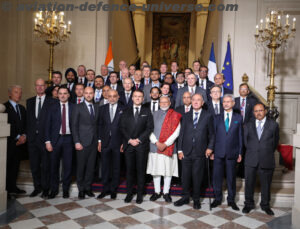By Suresh Somu
Bangkok. 06 February 2019. Reunification with Taiwan seems to be the mantra that China has been singing to the world for some time now, which is leaving the Americans to be increasingly wary of China’s intention towards Taiwan.
For the record, China President Xi Jinping has lashed out that nobody can change the fact that Taiwan is part of China, and that people on both sides of the Taiwan Strait should seek “reunification”.
Prominently, Taiwan President Tsai Ing-wen continues to strongly oppose the notion. So now the question one could ask: Will China at some point bring the self-ruled island under its control by force?
China has grown tremendously over the past decades and has been building a lethal force. In a time frame of 20 years, the military balance across the Taiwan Strait has increasingly titled towards China.
Despite Taiwan’s efforts in acquiring defence systems, it is still perceived as “crippled” compared to mighty China. Its action, repeated military aircrafts and ships to circle the island on drills for the past few years and progressively worked to isolate the island internationally definitely speaks about China’s capabilities.
Taiwan is only one of a growing number of flashpoints in the US-China relationship, including a trade war between the countries. The American sanctions on the Chinese military, and China’s increasingly muscular military posture in the South China Sea.
It has also strongly objected to US warship passages through the Taiwan Strait this year, and issued a terse warning about Taiwan after talks in Beijing with the American Navy’s top officer, Admiral John Richardson.
China operational readiness
Recently, President Xi upped the stakes when he ordered forces to be battle-ready and get prepared for military conflict. Such looming statements gave rise to China’s strategy.
Analysts opined that one cannot undermine China’s might and capabilities but remained cautiously optimistic that it wouldn’t take such drastic measures. To note, since 2002, Xi has made repeated orders to People’s Liberation Army (PLA) to increase its combat readiness.
So it will be of no surprise if PLA conveys its military capabilities confidence to President Xi too. Simply put, China is operational ready to take on any country that stands in its way.
Progressive trade talks
On the trade front, it is encouraging to note that trade war is not going to be an on-going affair. In essence, in a matter of time, both countries will run out of ammunition especially when it is at the expense of the economic growth; with the recent businesses heavily hampered with trade barriers. President Donald Trump, unlike his previous predecessor, is known for his hard antics.
And that also proves that US is not going to be a pushover. However, no matter how much one pushes or gets cornered, it has to stop at some point.
That’s what happened when US and China put its act together. While analyst remained skeptical about the ‘progressive’ talks, it’s always heartwarming to know power-hungry nations set to come to the negotiation table to talk about thorny issues, which sets the tone globally.
Chinese Vice Premier Liu He, Beijing’s top negotiator in the US-China trade dispute had a meeting with U.S. President Donald Trump in the Oval Office. China’s Foreign Ministry noted the country’s “good faith” to work with the United States to resolve trade frictions.
Cherish good work relations
According to the White House transcript reported by The Diplomat, Trump had the letter read aloud during his meeting with Liu.
In the letter, Xi said: “As I often say, I feel we have known each other for a long time, ever since we first met. I cherish the good working relations and personal friendship with you. I enjoy our meetings and phone calls in which we could talk about anything. It falls to us to work together and accomplish things meaningful for the people of our two countries and the world at large.”
The Diplomat reported, China has every reason to strike a deal with the United States now, considering that Beijing is surrounded by domestic challenges and troubles.
However, to its domestic audience, particularly to those passionate nationalists, Beijing cannot lose face against Washington. Thus, playing down the trade talks quite seems to be the only resolution.
Clearly, the Trump administration flexed its muscles; the US$250 billion tariffs have hit a substantial portion of China’s exports to the United States. And with more additional tariffs in the pipeline has caught China’s attention that led them to the discussion table.
While little is known now on the outcome of the meeting, the question begets on how Trump will transform this leverage into a successful negotiated agreement.




























































































































